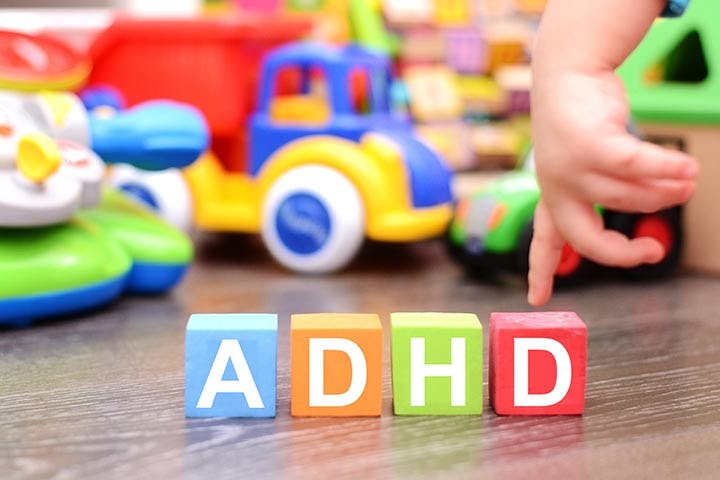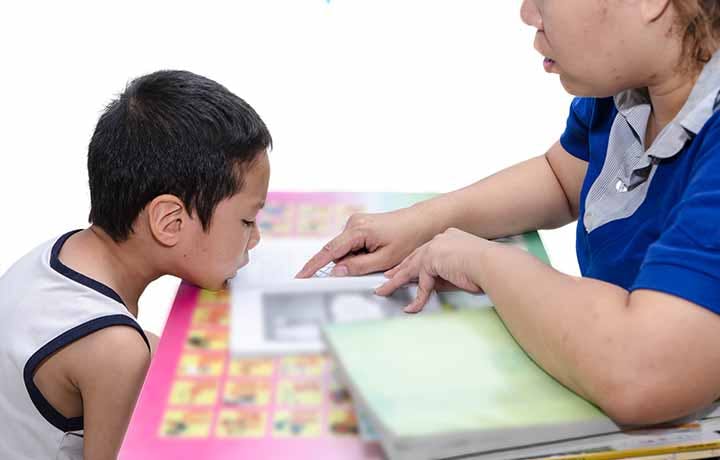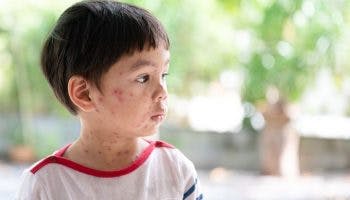Quiz: Find Out If Your Child Has ADHD or ASD
Published | 6 min read
ADHD and ASD share similar symptoms. Identifying ways that enable a child to cope with either disorder can ensure optimal growth.

Attention deficit hyperactivity disorder (ADHD) usually presents with signs like excessive physical movement, difficulty maintaining concentration, and a tendency to perform actions without thinking. On the other hand, autistic spectrum disorder (ASD) also manifests with similar symptoms and unusual, repetitive movements like hand flapping, back-and-forth rocking, and spinning in circles. Inattentiveness is also a strong sign of ASD.
Does Your Child Have ADHD or ASD?
Discovering if your child has ADHD or ASD can help you devise a treatment plan, allowing them to cope with their specific condition.
Let’s learn what your answers indicate.
If your answers are mostly A’s: Your child potentially has ADHD

Most cases of ADHD or attention deficit hyperactivity disorder is diagnosed when children are 6 to 12 years old. There is no exact cause of ADHD. However, factors like being born prematurely, low birth weight, and smoking or drug use during pregnancy may contribute to this condition.
ADHD treatment: the Western approach
In Western medicine, the best treatment for ADHD is a combination of both medication and therapy.
Medication
There are currently five types of ADHD medicines. However, they do not offer a permanent cure as they only help ease the symptoms. They can also cause side effects ranging from stomach issues and headaches to mood swings and a lack of appetite. The medicines include:
- Methylphenidate
- Lisdexamfetamine
- Dexamfetamine
- Atomoxetine
- Guanfacine
Therapy
Therapies can provide a more well-rounded approach to treating ADHD. Some common ones include:
- Psychoeducation, which engages individuals in an active discussion about ADHD so they can manage it better
- Behaviour therapy, which teaches behaviour management techniques
- Parent training and education programmes
- Social skills training to help individuals develop better communication and interaction skills
- Cognitive behavioural therapy or CBT, a talking therapy to help ADHD individuals cope with the condition
ADHD: an Eastern Medicine approach
According to Traditional Chinese Medicine (TCM), the primary causes of the condition are a weak body constitution and lack of kidney essence (jing). “A child with spleen qi (vital life force) deficiency or liver yang (active energy) hyperactivity may also be at risk of ADHD, restlessness, and body heat,” says Eu Yan Sang TCM Physician Tiang Sack Sing. In general, ADHD occurs due to a weak constitution combined with acquired environmental and dietary factors.
To help a child cope with ADHD, TCM focuses on invigorating the brain and kidneys and regulating spleen and stomach functions. Some nutritious herbal soups that can support this:
- Pork bone soup with walnuts, wolfberries, black sesame seeds, sea cucumber, or dried scallops can effectively tonify the kidneys.
- Broth prepared using herbal soup bags like ‘Chinese Four Herbs Soup’ (Si Shen Tang), taken 2 to 3 times a week.
- Chicken soup and a pork soup cooked with yam, chestnuts, and red dates for kidney tonification.
Physician Tiang notes that a combination of proprietary Chinese medication like Liuwei Dihuang and Qi Jianzhong can improve a child’s weak constitution. Spirulina tablets are also a good source of beta-carotene, iron, alkaline minerals, and amino acids.
Caution: You should consult a TCM practitioner before giving these medicines to your children. Good habits like going to sleep early, limiting light and sound exposure, and consuming natural, balanced foods are beneficial too.
If your answers are mostly B’s: Your child likely has ASD

Autism spectrum disorder (ASD) and autism are a group of brain development disorders characterised by difficulties in social interaction, verbal and nonverbal communication, and repetitive behaviours. The most obvious signs and symptoms of autism tend to occur between 2 and 3 years of age.
ASD treatment: the western medicine approach
While ASD is common among young children, there is currently no cure or medication for this condition. According to the Early Autism Project (EAP) in Malaysia, the Applied Behavioural Analysis (ABA) approach is the only research-based teaching approach for autism supported by over 1000 journal articles based on controlled studies, post-treatment follow-up data, and peer-reviewed studies. Results are encouraging – 50% of young children with ASD who receive good quality intensive ABA can catch up to their typical developmental age.
Other than ABA, other therapies can also be part complete ASD treatment program. The Centers for Disease Control and Prevention lists a few recommendations:
- Assistive technology, which uses electronic devices for building interacting skills
- “Floortime” approach for emotional and relational development
- Occupational therapy to teach individuals life skills so that they can function independently
- Social skills training, which includes communication and problem-solving skills
- Speech therapy for improving communication skills
ASD: an Eastern medicine approach
According to TCM, 3 organ systems — the heart, spleen, and kidney — govern awareness and reasoning. The heart governs the mind and spirit (shen) and controls the emotional state and short-term memory, while the spleen links to a child’s ability to concentrate, memorise or study. Meanwhile, the kidney controls long-term memory. A disturbance in these systems can cause autistic symptoms.
In TCM, treatment for this condition relies on phlegm elimination by clearing heart heat, tonifying kidney essence, spleen qi, heart blood, qi (vital life energy) and yin (passive energy).
According to TCM, phlegm elimination is crucial as it concerns two TCM diagnoses of ASD:
- Phlegm dampness in the mind can cause dullness, lethargy, impaired speech, mental confusion, and a lack of awareness.
- Secondly, phlegm fire presents with signs like aggression, constipation, disturbed sleep, self-talk, a short temper, or uncontrolled laughing or crying.
Heart or blood or yin deficiencies will also cause ASD symptoms like lethargy, stillness, aggressive behaviour, or fidgeting restlessness. Kidney essence and spleen qi deficiencies affect a child’s food intake and mental development.
Additionally, the Scientific Bases of Acupuncture book suggests that acupuncture influences the central nervous system and neuroendocrine function. The book also mentions that tongue acupuncture is being studied for several brain disorders in children, including blindness, cerebral palsy, and autism.
If you want to consider TCM medications or treatments for ADHD or ASD, speak to a qualified practitioner beforehand and help them understand your child’s daily activities and dietary habits. It’s also advisable to notify the practitioner if you had an unhealthy diet and lifestyle during your pregnancy, as well as any difficulties you might have encountered.
Ultimately, recognising the signs of ADHD or ASD contributes to a child’s healthy growth and development. Therefore, seek treatment as early as possible to attain better treatment efficacy.
References
- NHS. 2018. Symptoms: Attention deficit hyperactivity disorder (ADHD). [Accessed 1 December 2021]
- HealthCMI. 2018. Acupuncture and Herbs Benefit Autistic Children. [Accessed 1 December 2021]
- Centers for Disease Control and Prevention. 2021. Signs and Symptoms of Autism Spectrum Disorders. [Accessed 1 December 2021]
- PACIFIC COLLEGE OF HEALTH AND SCIENCE. TRADITIONAL CHINESE MEDICINE AND AUTISM. [Accessed 1 December 2021]
- NHS. 2018. Treatment: Attention deficit hyperactivity disorder (ADHD). [Accessed 1 December 2021]
- Early Autism Project. Applied Behavioural Analysis (ABA). [Accessed 1 December 2021]
- Centers for Disease Control and Prevention. 2019. Treatment and Intervention Services for Autism Spectrum Disorder. [Accessed 1 December 2021]
Share this article on






